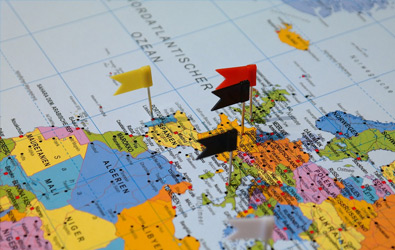





Reading a web page written in Arabic, but left-aligned can become really painful for an Arabic speaking person. A Japanese person may doubt the seriousness about the business of a company if he sees their website carrying bright colours, but on the other hand, for the same reason, an American may feel enthusiastic to work with such company!
Localisation, more than just translating the content, involves transforming a product, product information, commercial e-literature etc. to suit a particular culture. This connects an organisation with the local end user. Similarly, Internationalising products, services, websites and other text, that is, offering it in multilingual form widens its reach onto the international market.
Identifying this key role of trans-lingual communication in today’s business, we at Language Services Bureau give special attention to the localisation and internationalisation services. The local language becomes the vector of information to a particular region.
Complete, accurate and appropriate content translation or Trans-creation (complete adaptation or re-writing the content in the target language) where necessary. The content is created considering the local or global SEO requirements.
Some customers may require language combination options. For example in case of specific webpages created for expats, the content may be required in one language and the currency, payment options, information about local services etc. in another.
The design, colours and other appearance related aspects are re-worked upon to suit the local/global requirements.
Pictures, symbols, illustrations, etc. are revised to suit the target culture.
All the technical and software related part in localisation and internationalisation is handled by our trusted partner.
We are aware that once a localised product is launched, our customers also need assistance in order to take care of their aftersales procedures, e.g. international shipping, local customer communication and service, etc. We ensure complete language assistance in these areas as per customer requirements.
Complete assurance of data security throughout the project process as well as after completion.
The main types of localization are – Website Localization, Software Localization, App Localization (IOS App, Mobile App, Android App), Social Media Localization, Multimedia Localization, SEO Localization, Game localisation
Localisation deals with cultural (Colors, shapes, sizes and styles, Images, icons and graphics, Societal codes; e.g., humor, etiquette, rituals, myths and symbols, Societal values, power, relationships and beliefs) and functional content (Date and time formats, telephone numbers and contact information, Weights, measurements and geographical references Language and linguistic content, product descriptions and reviews) - if all these are considered it can be improved
Some of the common localisation errors are - disproportional text, incorrect use or translation of idioms, missing characters, no knowledge of dialects, ignoring translateable names (e.g. countries), skewed texts, wrong metric units, incorrect images, inappropriate keywords, irrelevant content, non-conformity to local regulations, inadequate localisation testing, stale content, etc.
The goals of localisation are facilitating entry into new markets, gaining a competitive advantage, increasing customer satisfaction, increasing brand loyalty, increasing revenue, etc.